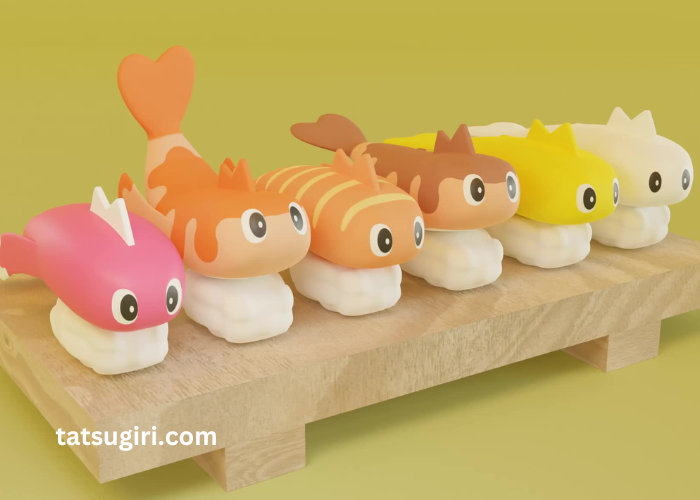In the realm of landscaping and outdoor design, Yellow Tatsugiri emerges as a revolutionary approach to creating vibrant and sustainable outdoor spaces. This article delves into what Yellow Tatsugiri represents, its unique features, benefits, installation process, maintenance tips, and its environmental impact.
Understanding Yellow Tatsugiri
Yellow Tatsugiri is not just another landscaping concept; it embodies a philosophy of blending vibrant aesthetics with sustainable practices. Originating from traditional Japanese landscaping principles, Yellow Tatsugiri focuses on harmonizing natural elements with modern design sensibilities to enhance outdoor environments. Whether used in residential gardens, public parks, or commercial landscapes, Yellow Tatsugiri offers a unique blend of beauty and functionality.
Features and Benefits of Yellow Tatsugiri
- Natural Aesthetics: Yellow Tatsugiri utilizes natural materials and color palettes to create serene and visually appealing outdoor spaces that complement their surroundings.
- Durability and Longevity: Designed to withstand varying weather conditions and heavy foot traffic, Yellow Tatsugiri installations are durable and require minimal maintenance over time.
- Sustainability: Yellow Tatsugiri promotes sustainable landscaping practices by using locally sourced materials, incorporating water-efficient irrigation systems, and minimizing environmental impact during installation and maintenance.
- Versatility: From pathways and garden borders to intricate designs and focal points, Yellow Tatsugiri adapts to different landscape designs and architectural styles, offering versatility in application.
Installation Process of Yellow Tatsugiri
Installing Yellow Tatsugiri involves several key steps to ensure optimal results:
- Site Preparation: Clearing the area of existing vegetation and debris, ensuring proper drainage, and leveling the ground for a smooth surface.
- Material Selection: Choosing high-quality natural stones, gravel, or aggregates that align with the desired aesthetic and functional requirements.
- Layout and Design: Planning the layout and design of Yellow Tatsugiri elements, considering pathways, borders, focal points, and integrating them seamlessly into the landscape.
- Installation Techniques: Placing and arranging stones or gravel according to the planned design, ensuring proper spacing, alignment, and stability.
- Finishing Touches: Compacting the materials, adding finishing touches such as edging or decorative elements, and ensuring everything blends harmoniously with the surrounding landscape.
Maintenance Tips for Yellow Tatsugiri
While Yellow Tatsugiri is known for its durability and low maintenance, regular upkeep ensures longevity and preserves its aesthetic appeal:
- Regular Cleaning: Removing debris, leaves, and dirt to prevent buildup and maintain the cleanliness of pathways and decorative features.
- Weed Control: Applying weed barriers or using eco-friendly weed control methods to prevent weed growth between stones or gravel.
- Periodic Inspection: Checking for signs of erosion, settling, or damage, and addressing issues promptly to prevent further deterioration.
- Refreshing and Rejuvenation: Periodically refreshing gravel or stones, repositioning as needed, and replenishing materials to maintain the integrity of Yellow Tatsugiri installations.
Environmental Impact of Yellow Tatsugiri
Yellow Tatsugiri promotes environmental stewardship through its design principles and sustainable practices:
- Water Conservation: Utilizing permeable materials and water-efficient designs to minimize water runoff and support local ecosystem health.
- Material Selection: Choosing locally sourced and sustainable materials reduces carbon footprint and supports regional economies.
- Biodiversity Enhancement: Designing landscapes that attract native flora and fauna, promoting biodiversity and ecological balance.
Conclusion
Yellow Tatsugiri represents a harmonious blend of aesthetics, sustainability, and functionality in landscaping. Whether enhancing a residential garden or revitalizing a public space, Yellow Tatsugiri offers a timeless appeal and practical benefits that resonate with modern environmental values. By understanding its installation process, maintenance requirements, and environmental impact, landscape enthusiasts and professionals alike can embrace Yellow Tatsugiri as a transformative approach to outdoor design.
In summary, Yellow Tatsugiri isn’t just about creating beautiful landscapes; it’s about fostering sustainable and resilient outdoor environments that endure and enrich lives for years to come.



